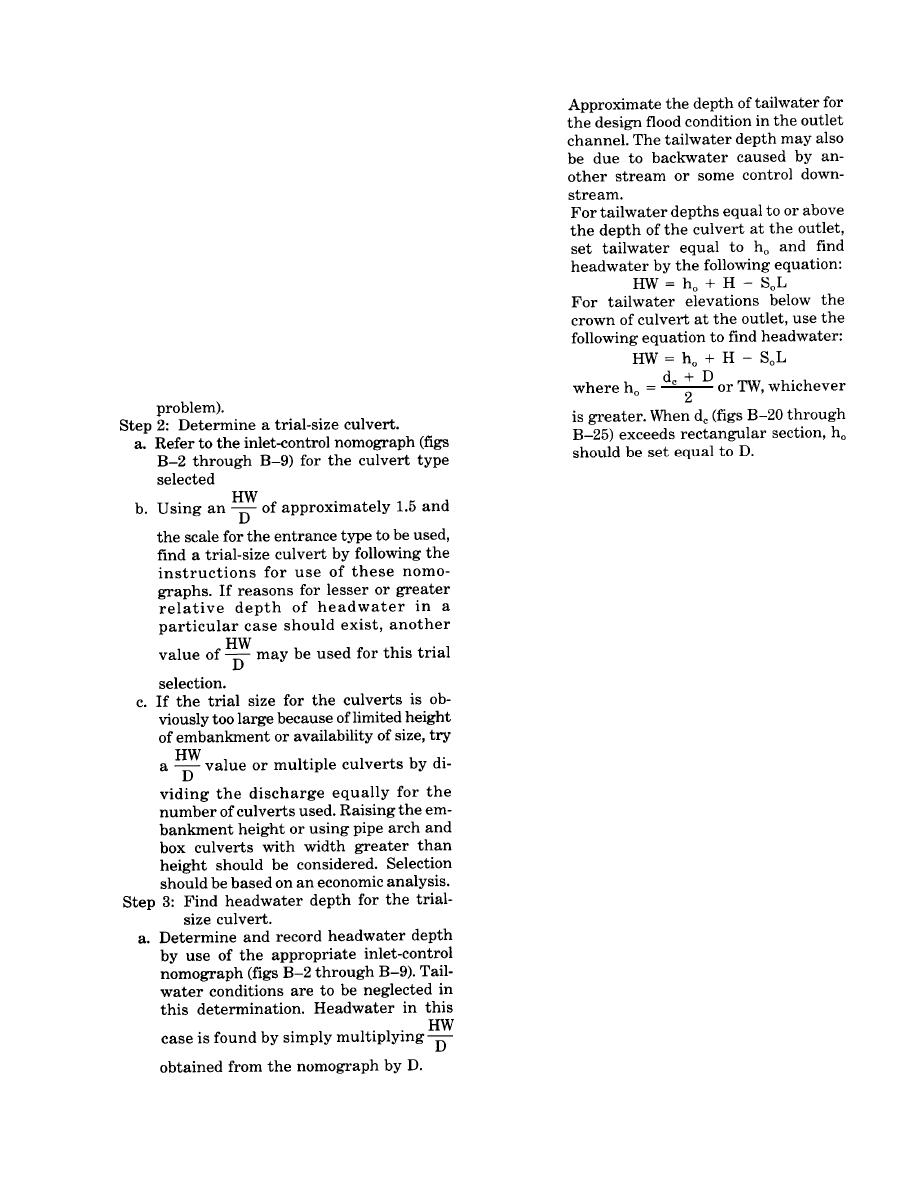
TM 5820-4/AFM 885, Chap 4
b. Compute and record headwater for out-
B-4. Procedure for selection of culvert size.
let control as instructed below:
Select the culvert size by the following steps:
(1)
Step 1: List given data.
a. Design discharge, Q, in cubic feet per sec-
ond.
b. Approximate length of culvert, in feet.
c. Allowable headwater depth, in feet, which
is the vertical distance from the culvert
(2)
invert (flow line) at entrance to the water-
surface elevation permissible in the ap-
proach channel upstream from the cul-
vert.
d. Type of culvert, including barrel mate-
(3)
rial, barrel cross-sectional shape, and en-
trance type.
e. Slope of culvert. (If grade is given in per-
cent, convert to slope in feet per foot.)
f. Allowable outlet velocity (if scour is a
c. Compare the headwater found in Step 3a
and Step 3b (inlet control and outlet con-
trol). The higher headwater governs and
indicates the flow control existing under
the given conditions.
d. Compare the higher headwater above
with- that allowable at the site. If head-
water is greater than allowable, repeat
the procedure using a larger culvert. If
headwater is less than allowable, repeat
the procedure to investigate the possi-
bility of using a smaller size.
Step 4: Check outlet velocities for size se-
lected.
a. If outlet control governs in Step 3c, out-
let velocity equals Q/A, where A is the
cross-sectional area of flow at the outlet.
If dC or TW is less than the height of the
culvert barrel, use cross-sectional area
corresponding to dC or TW depth, which-
ever gives the greater area of flow.
b. If inlet control governs in Step 3c, outlet
velocity can be assumed to equal normal
velocity in open-channel flow as com-
puted by Manning's equation for the
barrel size, roughness, and slope of cul-
vert selected.
Step 5: Try a culvert of another type or shape
and determine size and headwater by
the above procedure.
Step 6: Record final selection of culvert with
size, type, outlet velocity, required
headwater, and economic justifica-
tion.
B23



 Previous Page
Previous Page
